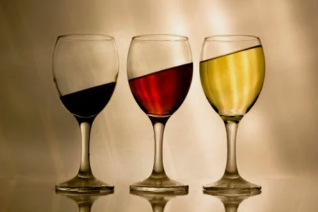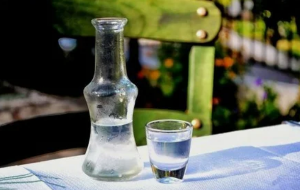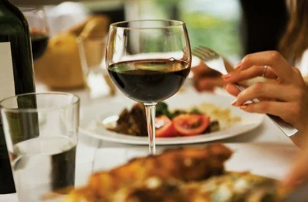Alcohol has a negative impact on health, but it is still consumed. The range of alcoholic products is diverse. Some drinks are more damaging to the body, others to a lesser extent.

Scientists have long tried to systematize existing alcohol in such a way that it becomes clear which type is more useful. Studies have shown that some drinks have beneficial effects on the body when consumed in small doses and infrequently.
What is alcohol like?
To understand which alcohol is the most harmless and safest, you need to know its types. Subdivided by strength:
| Classes | List |
| strong alcohol | Whiskey, brandy, ethanol, sambuca, rum, vodka, absinthe, tequila, gin, cognac |
| medium ethanol | Vermouth, wine, liqueur, cider, martini, punch, grog |
| low grade | Ale, frothy sparkling wines, champagne |
Harmfulness, however, is not linked to strength. An experiment was carried out which proved that people do not suffer from beverages to a great extent.
Dependence is most often caused by low-alcohol products that are consumed in appropriate quantities and systematically.
It causes various health problems.
Effects of ethanol on the body
There are no absolutely safe alcoholic products. One drink is more harmful to the body and the other less. All alcohol has the following negative effects:
- There is a vasospasm - the pressure increases.
- Brain cells die. An alcohol addict suffers from memory disorders, hallucinations, and mental health problems.
- The gastrointestinal secretion worsens. The digestive organs lose their ability to digest food normally. There is gastritis and gastric ulcer, duodenal ulcer.
- Liver cells are destroyed - severe organ pathologies develop.
- The pancreas synthesizes juice and processes it worse. This is fraught with inflammation.
The genitourinary system also suffers.
Alcoholics often develop infertility.
Women cannot bear a child or they are born with congenital abnormalities. Men become impotent.
Your narcologist warns: safe doses
According to the World Health Organization, a safe serving for a man is 0. 05 liters of strong products or a few glasses of dry wine per day. For women - 0. 03 l or a glass.
And at least twice a week you have to observe the "dry law".
The drink with the most negative effect is the one whose dosage is exceeded.
Hazard assessments
Scientists have classified alcoholic products according to damage assessment as follows:
- First place - alcohol + energy drink. Finished or mixed independently. Energy drinks contain caffeine, which suppresses the calming effects of ethyl alcohol. A person does not understand that he is drunk, does not report his actions. Drinking such drinks regularly leads to dizziness, weakness, memory loss and consciousness. After the disenchantment, a man or woman no longer remembers what they did or who they were with.
- Second place - alcoholic cocktails. They are drawn into the walls of the blood vessels very quickly and cause severe poisoning. Against the background of their consumption, the concentration of sugar increases. The body is burdened colossally. The hangover after seeing this will be severe.
- Third place - sparkling wines and champagne. One glass does not do any significant harm to health, but if you drink large amounts of products, the body suffers a lot. The negative effect is due to the high sugar content in beverages. Glucose damages the liver and pancreas. In the intestines, products cause unprocessed foods to rot.
- The fourth place is beer that contains phytoestrogens. These elements pose a threat to the stronger and weaker sex. Foam provokes obesity. Disrupts hormone levels. Changes the structure and thickness of the myocardium (due to which severe heart diseases occur). Beer alcoholism is more difficult to treat than alcohol addiction.
- Fifth place - cognac. It is considered a pure alcoholic drink with no added various impurities. In moderation, it can even be beneficial. The product stabilizes intravenous pressure. Prevents pathogenic microbes from entering. It should be noted that the drink must be of good quality and consumed in an amount not exceeding 50 ml per day.
- Sixth place - liqueurs. The downside of this drink is its high glucose content. It is not recommended for patients with diabetes mellitus, people prone to obesity.
- Seventh place - wines made through fermentation of grapes. Useful in small amounts. However, this only applies to healthy people.
- Eighth place - vodka. Doctors consider the drink the most harmless. This is explained by a minimum in calories. It does not contain any carbohydrates. Vodka does not contain any harmful impurities (only ethanol and water).
Only high quality alcoholic beverages cause minimal damage. Don't forget about the safe dosage.
What to drink?
Red and white wine prevents the development of unfavorable age-related changes, diabetes. The drink strengthens the walls of blood vessels, thins the blood and reduces the chance of developing cancer. The products must be of good quality and expensive.

With tinctures and liqueurs, it is better to give preference to products that are based on natural ingredients. Thanks to the herbal ingredients in the composition, drinks have a good effect on the body if the measures are taken. They work in the same way as the herbal extracts that make up the ingredients.
Healthy grapes are preserved in cognac. The drink also contains tannins. Thanks to this, anti-inflammatory effects are achieved. However, the products also contain ingredients that cause their intolerance.
If headache, hyperemia and itching of the epidermis occur, it is recommended to refuse cognac even after drinking a small amount.
Whiskey in a dose of 30-40 ml is used to relax and relieve nervous tension. With vasospasm, a couple of tablespoons of the drink relieve the pathological condition. However, when the amount is increased, blood pressure begins to rise.
How to choose the most harmless alcohol?
Alcohol products should only be of high quality. Cheap drinks contain a lot of toxic substances. Tips for choosing the safest vodka:

- Look through the bottle on the inside of the label. If it is completely glued, it is a fake. Factory equipment applies it in three strips.
- Look at the bottom of the jar. At the factory, the conveyor is lubricated with a mixture of oil and graphite. This does not leave any easily visible dark spots on the original bottle.
- Shake the vodka and look at the bubbles. There are few of them in quality products.
- The original drink has an excise stamp with protective layers and a white insert.
The right choice of cognac:
- A real drink should have a lot of taste. The predominance of a flavor indicates poor quality products.
- Compare the drop sizes of drink and yeast. If the first is wider than the second, the cognac is high in sugar and preservatives.
- Original bottles have decals. Quality products are determined accordingly.
What makes a good wine different:
- Dry wines are usually not forged. It's not profitable. Cheap guys are simply branded.
- The cork must not be made of plastic.
- Quality wine is expensive. Cheap drinks are diluted powder, there are no grapes in them.
- It is not recommended to buy wine from kiosks. In large hypermarkets this is better. The drink must be stored properly.
Even high-quality products can be harmful to health in large quantities. Hence, it must be consumed in moderation.
Instructions for safe grape wine
The most harmless beverage doctors consider natural wine. Products with remnants of berry peel are particularly useful. They contain the most valuable substances.
Through rational wine consumption, the human body is enriched with vitamins, amino acids, trace elements and antioxidants. The drink improves the functioning of the CVS, rejuvenates. Injections are made from its extract, products in the field of cosmetology.
People who drink it in acceptable doses suffer less from heart disease. You retain energy, fit and strength longer.

It is recommended to combine red wine with the following snacks:
- shrimp and other seafood;
- cheese;
- nuts;
- Chicken and Turkey Breast;
- meat with pepper and eggplant.
When buying wine, make sure that the label says "natural". If it is missing, the drink is a fake. Quality products are never concentrated. You have to look at the packaging, it shows the harvest date. Bad wines are never aged or vintage.


























